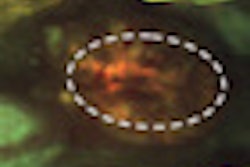Loss of tissue autofluorescence could be an early indicator of the presence of oral cancer, according to a study in the Journal of Craniofacial Surgery (November 2010, Vol. 21:6, pp. 1899-1903).
In a study conducted at the Universitàà Cattolica del Sacro Cuore in Rome, 32 patients at risk for oral cancer underwent autofluorescence testing. Of these patients, 12 (group A) experienced potentially malignant diseases. The other 20 (group B) were previously operated on for oral cancer.
Thirteen patients showed loss of autofluorescence (eight from group A and five from group B). Among these 13, 12 were affected with lesions of relevance; in group A six had squamocellular carcinoma and two had low-grade dysplasia, while in group B two patients had high-grade dysplasia, two had low-grade dysplasia, and one had an epithelial hypertrophy with inflammatory cells.
Preliminary results appear to indicate that autofluorescence is a high-performing test for the individuation of oral cancer in populations at risk, the researchers concluded.
Copyright © 2010 DrBicuspid.com



















